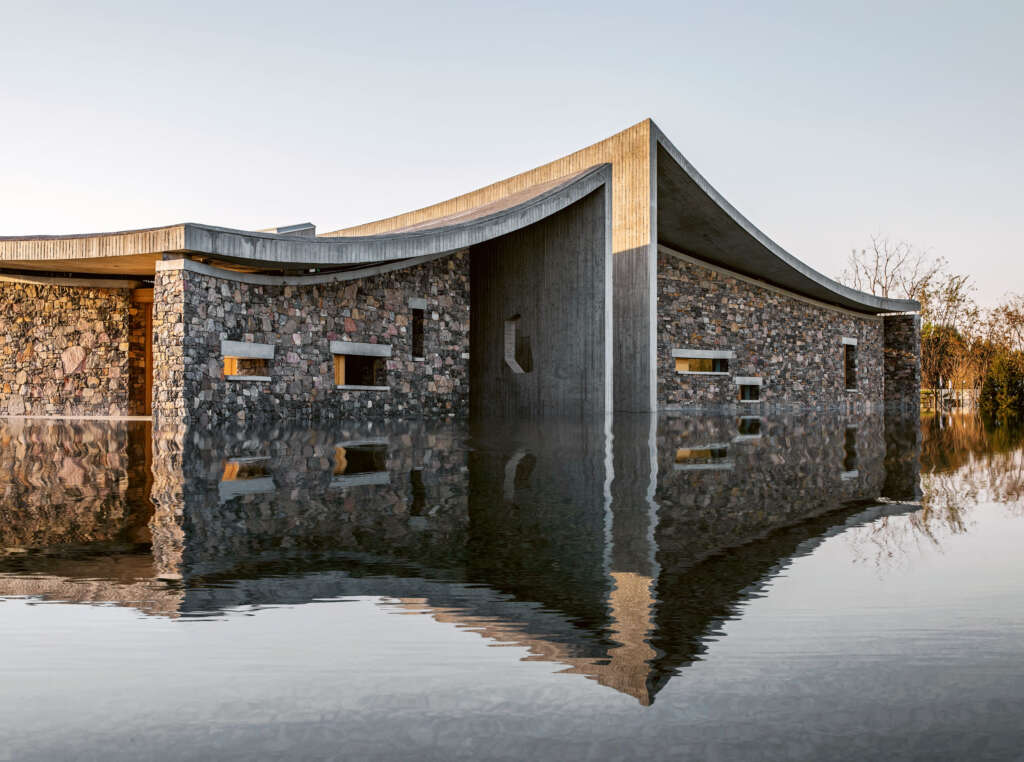
Zibo OCT Art Center
Architect: Studio Zhu Pei
Location: Zibo, Shandong, China
Type: Cultural
Year: 2020
Photographs: Jin Weiqi, XIA ZHI PICTURES
The following description is courtesy of Zhu Pei. OCT Art Center is located in the east of old town of Zibo, Shandong Province. The site used to be a wilderness land adjacent to Fenghuangnan, a historic relic of Shang and Zhou dynasties. In the middle of deserted emptiness, the site is the only thing that induces thinking. This emptiness evokes one’s inner impulse to rebuild the poetic “artificial temple” in the wilderness.1 It not only speaks to the lost civilization, but also confronts the barren and primitive natural environment through simple and affirmative geometric forms, to achieve a balance of tension between the artificial and the natural, the present and the past.



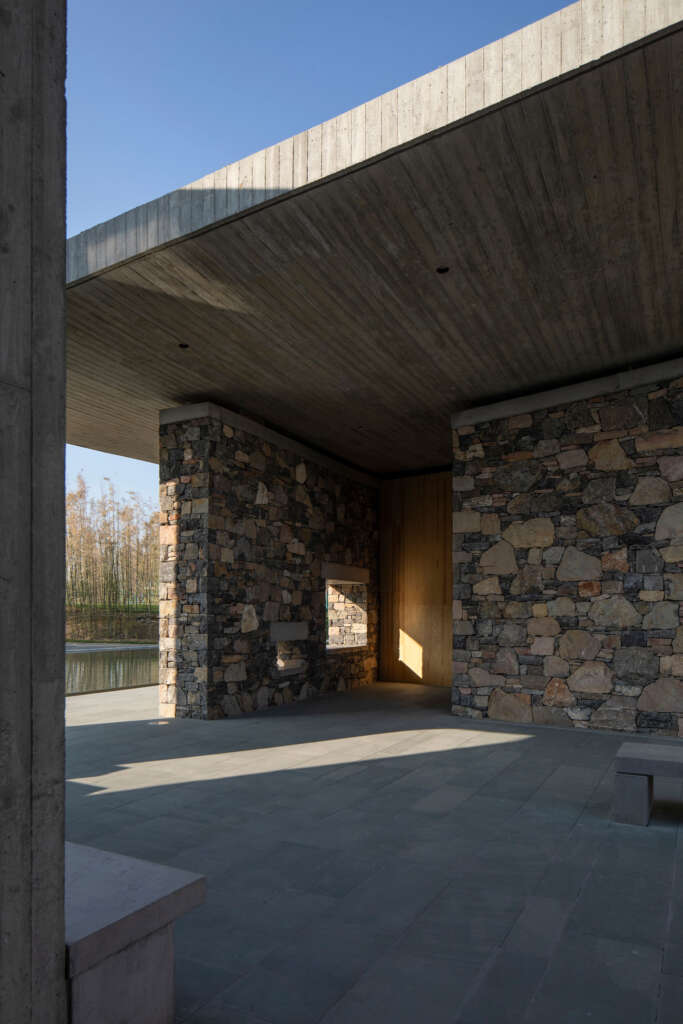

The architectural form of OCT Art Center is conceived from the traditional Chinese academy- “Heyuan”, a central courtyard was surrounded by several houses.
This porous, eaves-out, and ring-shaped building with a huge roof overhang is related to the local culture and responds to the specific climate. The central courtyard, a void space, can be transformed into a gathering space especially for the opening of the exhibition. When it’s a rainy day, semi-outdoor activities are permitted in the corridor. This sponge-like porous building can accommodate many people, allowing visitors to wander through a series of spaces of varying scales, sometimes indoor and sometimes outdoor, experiencing the effects of shading and rain protection brought by the eaves.
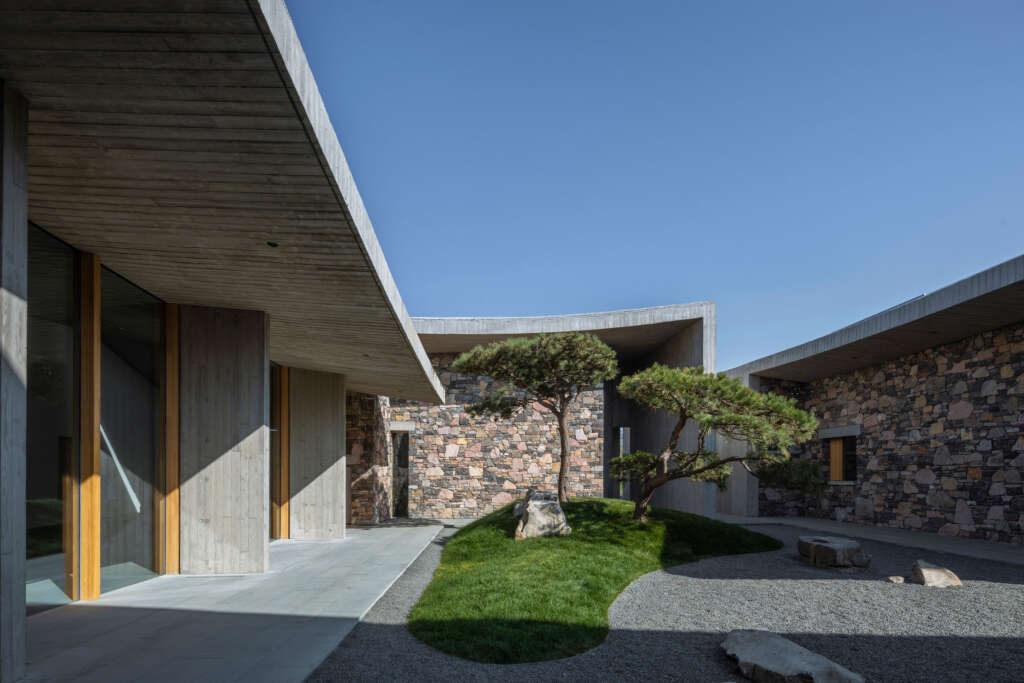



The architecture is simple and relatively rough with its material characters, such as concrete roof and masonry stone wall. The hyperboloid roof sags due to gravity in nature, which also brings good tension to space. Although people are in a seemingly rectangular and simple space, due to the change of the roof, the homogeneous space becomes very tense. Some places will be tight, and some will be loose, reflecting the sense of movement and strength of the building. The roof is made of rough fair-faced concrete poured on site. The method of laying the walls is based on local rough masonry stone walls commonly used by locals, which is characteristic of northern China, especially in Shandong Province.
In traditional masonry construction system, the materials resist gravity through force transmission under the compression. But in traditional timber construction system, the timber structure is generated by the joining of wooden parts. The structural materials are not only compressed but also strained, in achieving the drooping hyperboloid of the roof. OCT Art Center is inspired by the saggy tent structure. The thin reinforced concrete hyperboloid roof drop is pulled by reinforced concrete columns and walls of different heights. The hyperboloid roof rushes to the ground of the interior space under gravity. One can feel the tension created by the tipping point of the stretching while walking around the indoor spaces. On the other hand, the structural tolerance and materiality of reinforced concrete tension structures are pushed to the extreme. The poetic expression of this structure and materiality generates the experimental exploration of the art center in the translation from engineering construction to construction poetics.





OCT Art Center was carefully grounded in the rustic context of the north to create a sense of territory between the structured artifacts and the wild nature. The use of pools and bamboo forests not only extends its own boundaries but also weakens its oppositional relationship with nature. This is rather thought-provoking to me, why in the thousands of years of human construction, no matter how developed the technology is, architecture has never been able to get rid of the basic proposition of abstraction and geometry.
The creative thinking of OCT Art Center is a profound experiment focusing on structural form and tectonic expressiveness. Like my all past works, it has always been fascinating to explore column-free, horizontally extended structural forms and tectonic expressiveness while shaping porous, sponge architecture with wandering experience.
[1] An artifact in the wilderness, a habitat for both mind and body.
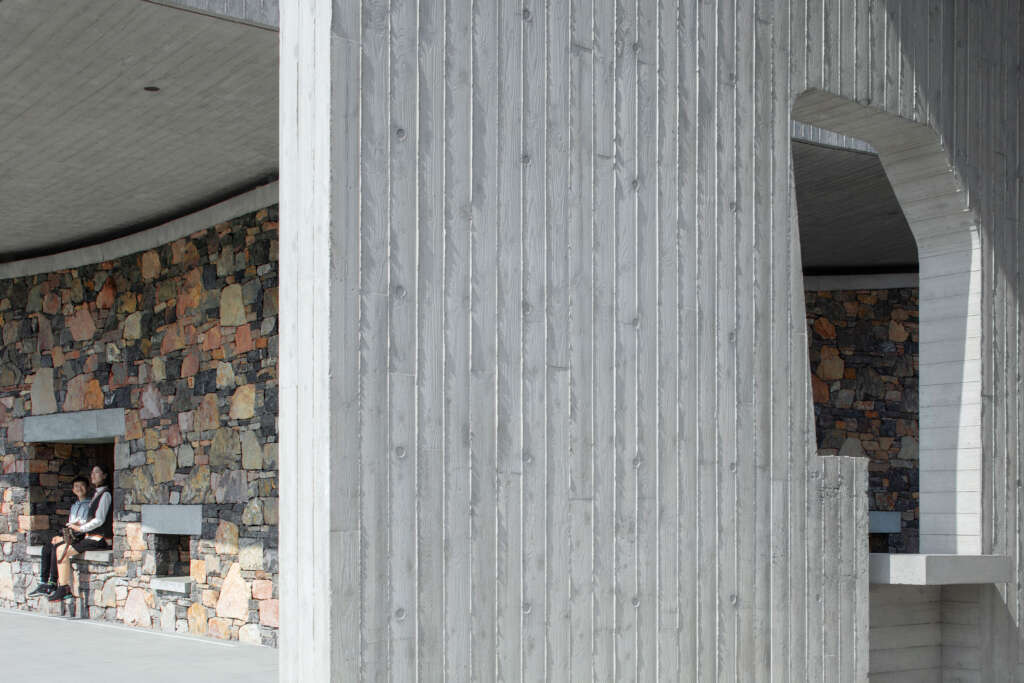

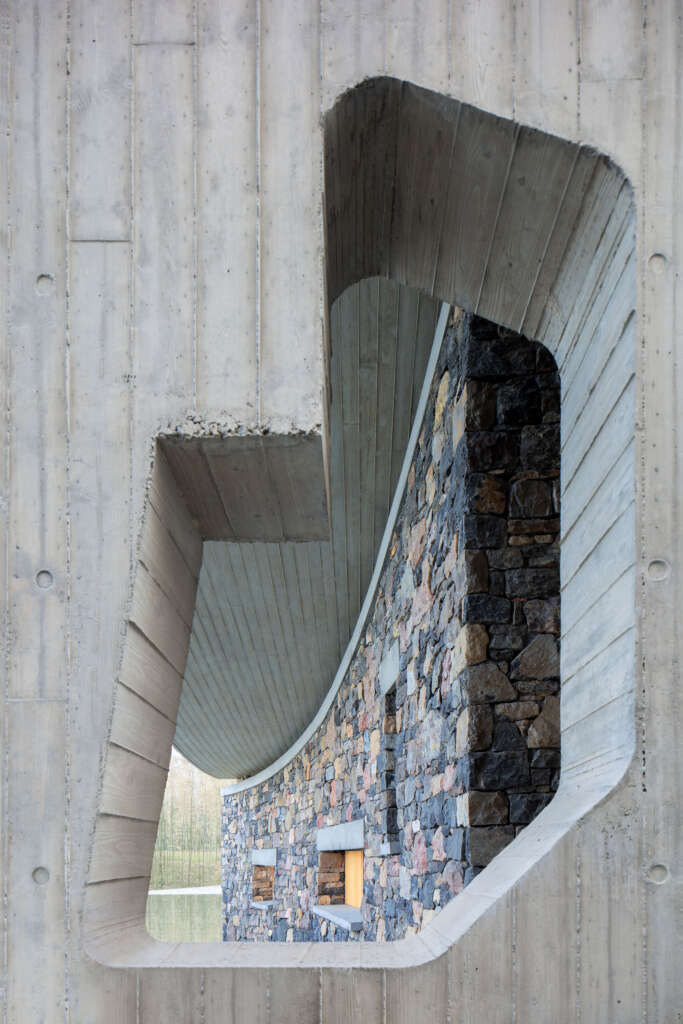


Project Details
- Project name: Zibo OCT Art Center
- Location: Zibo, Shandong, China
- Design Year: 2019
- Completion Year: 2020
- Site area: 27,792sqm
- Gross floor area: 2,471sqm
- Architecture, Interior and Landscape Design: Studio Zhu Pei
- Design Principal: Zhu Pei
- Design Team: Wilson Nugroho Markhono, Yina Luo Moore, You Changchen, Zhang Shun, Liu Yian, Ji Ming, Chen Yanhong, Liu Ling
- Cooperative Design in Landscape: L&A Design
- Cooperative Design in Structural and MEP: Zibo Architecture Design and Research Institute
- Client: Zibo OCT Group CO., LTD.
- Main Contractor: Taixing No.1 Construction Group CO., LTD.
- Consultants
- Façade: King Glass Engineering CO., LTD.
- Lighting: Ning Field Lighting Design CO., LTD.
- Photography: Jin Weiqi, XIA ZHI PICTURES




